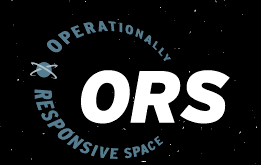

[SatNews] The Operationally Responsive Space (ORS) Program reduces time and cost to space and creates rapid launch capabilities. Spacecraft time and cost challenges have been addressed successfully, and ORS is now working to overcome high launch costs (now the larger portion of total mission costs).
Spacecraft manufacturing time and costs are declining rapidly due to Open Manufacturing (utilizing advanced technologies and robotics in repeatable processes), leveraging modular architectures in satellite design, and taking advantage of other advances. This has allowed ORS to reduce spacecraft by more than 60 percent. As spacecraft costs decline more rapidly than launch costs, the launch portion of small satellite missions is quickly becoming the majority of total mission costs. ORS has achieved glowing successes in reducing spacecraft cost and time to manufacture, and is now pursuing the launch part of the equation.
- ORS is developing rapid low-cost solutions for resiliency and reconstitution. Much focus is still required for payloads under 300Kg, the primary domain for many ORS payloads. The need for a resilient architecture and potential requirements for rapid reconstitution of capabilities has inspired great strides in spacecraft design and production, but launch vehicles still lag far behind. Despite decades of evolutionary launch vehicle iteration, access to space has not become affordable or guaranteed.
ORS is Attacking the Cost of Launch in Several Unique Ways
- Developing rideshare capabilities. ORS demonstrated, through the ORS-3 mission, successfully launching 26 separate payloads from unrelated organizations, all combined into a single launch.
- Preparing to Launch ORS-4/Super Strypi. The ORS-4 mission, featuring a low-cost expendable launch vehicle, is an essential part of driving down the cost and time to space. Military launches with payloads less than 300Kg have used Minotaur rocket platforms due to their lower operating costs. However, though the costs of small satellites are declining, launch costs remain disproportionately high for small satellites under 300Kg. While many launch vehicles are being designed for smaller payloads, Super Strypi is emerging as the front-running candidate for a durable long term solution.
- Developing novel commercial launch contracts, as was for the ORS-5 mission. ORS promotes commercial innovation through mechanisms such as ridesharing and dedicated commercial system development. Commercial innovation is a powerful agent for invention and efficiency, and will help reduce tenacious launch costs both technically and through innovative business approaches.
- Utilizing Automated Flight Safety Systems (AFSS) to lower range costs. Development and testing of Automated Flight Safety Systems for ORS-3 and ORS-4 could shave more than 40 percent off of existing range costs. Newer rockets and launch vehicles are smarter and have the ability to self-perform many of the range assessments and operations previously performed by extensive and costly facilities and systems. AFSS development also introduces smarter business processes. Partnering with ranges and industry creates repeatable frameworks and software processes that can be replicated on any range or government project.
- Working with DARPA on advanced launch systems (such as XS-1reusable demonstrator and the Solar Electric Propulsion system). Actions will lead to smaller, accessible, reusable, and geographically flexible launch vehicles that can be ready on a moment’s notice.

